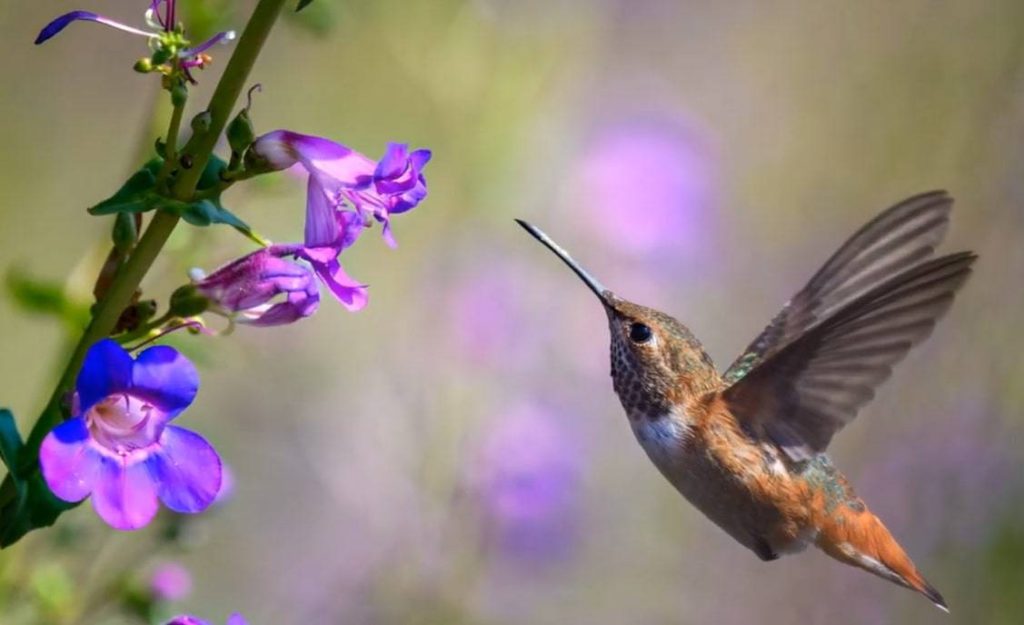The true mark of a living and breathing species on planet Earth is migration.
That’s right – no mobile living thing stays in one place all their lives.
Some prefer migrating to places that feel like their “hometown” or their natural habitats, while others search for greener pastures.
Like many other birds, hummingbird migration is instinctual. However, because of their diet, they can sometimes choose not to move too far from their natural habitat.
Let’s discover all about hummingbird migration and what triggers it. We will also answer the question, “When do hummingbirds migrate?”
Where Does Hummingbird Migrate Now?

Migration is a trait of living organisms.
Birds generally migrate to take advantage of seasonal resources, especially food, so they can breed successfully or simply survive.
Some migrations are short, while others can span continents. Hummingbirds fall into the short migratory birds mostly because they’re too little to undertake arduous migration journeys.
The American hummingbird population spends the winter in Central America or Mexico. As early as February, they migrate north to their breeding grounds in the southern US and western states and to areas further north later in the spring.
Any good hummingbird migration map will show you that these braids map get to the southern US states first, then the middle US states before they move up north into Canada. This pattern occurs from winter to spring.
And yes, they travel on their own because you may be pondering how they migrate on the back of geese.
That story is not true.
What is the Timeline for the Hummingbird Migration?
Do hummingbirds migrate?
Of course, they do!
Hummingbirds migrate to their different locations at the start of every season.
This means that they undertake this journey four times every year. They’re pretty strong for a small bird that weighs barely two grams – less than the weight of a penny!
Here’s a timeline for you below
September – Winter Migration
During this time, they have finished raising their young and will get up and move to warmer climates to avoid the harsh winter weather.
February – Spring Migration
At this time, they’ve rested enough and fattened up to move toward their real homes to spend the summer. They make a few stops on the way and this is where you come in with the bird feeders!
May to June – Fall and summer migration
The homesick hummingbirds move to their natural habitat to breed and raise their young. Read our article on types of American hummingbirds to know where each species naturally occurs.
Do Hummingbirds Return to the Same Place Every Year?
Now, you have the answer to the question, “When do hummingbirds migrate?” It’s time to learn something really important about hummingbird migration.
We’ve already established that hummingbirds are local to certain regions. In the USA and Canada, they’re mostly found in California, Texas, Alaska, Louisiana, New Mexico, Vancouver, and other places. Migration takes them all around these places and into Mexico.
If you want to know a hummingbird’s “hometown,” look for where it nests every season.
This is where it lays its eggs and breeds its young.
Most birds do not reuse nests – hummingbirds included – but research has shown that hummingbirds reuse their nesting areas. This indicates that they return to the same spots every year.
When they do, they set about rebuilding their nests with new materials. Sometimes, they use the same spots too!
This behavior mostly occurs in juvenile hummingbirds because they believe that their hatching location is a good place to source food.
What Triggers Hummingbird Migration?
I mentioned earlier that hummingbird migration is instinctive. They have a natural inclination to get up and go.
However, there are different opinions in the birding community when this question pops up.
Some general factors affect their migration. These are:
Change in Daylight Duration
Every new season comes with a change in how long the sun stays up. Hummingbirds can instinctively sense this.
Changes in Food Source Abundance
Because of their size, hummingbirds do not consume things like worms or seeds. Their primary diet is small insects, flower petals, and flower nectar. Seasons dictate the abundance of their food sources at different times, which they notice.
Of the 15 different species of hummingbirds found in America and Canada, Anna’s hummingbird can be considered native.
They do not migrate and are likely to stay in the same location all year round. However, they can move from one area to another for nesting, feeding, and wintering purposes.
How Far Does a Hummingbird Travel Per Day During Migration?
Did you know that hummingbirds are faster than robins? This is not surprising because they flap their wings up to 80 times per second.
The little critters’ hearts also beat up to 1,260 times per minute.
This is their usual state during migration, and to support this high-energy effort, they gain as much as 40 percent of their body weight (weighing up to three grams) before setting out.
This state can help them cover as much as 23 miles daily, flying at 20 to 30 miles per hour. For context, that is 37 kilometers, which a human being covers in about 30 minutes using a vehicle and a seven-hour walk!
They can cover up to 500 to 2,700 miles at a time, especially if Mexico and Alaska are on their route.
Compared to many other creatures (size and body length), this is one of the longest migrations undertaken by species!
Final Thoughts
Birding is a budding hobby/activity in North America, and it should be encouraged because it’s wonderful.
If you live in regions with many hummingbirds (they tend to exist in numbers in their areas – Arizona hummingbird fanatic Stephen Russell once calculated that his feeder takes care of around 140 hummingbirds weekly!
By following their migration pattern, you would know when to expect them in your area.

